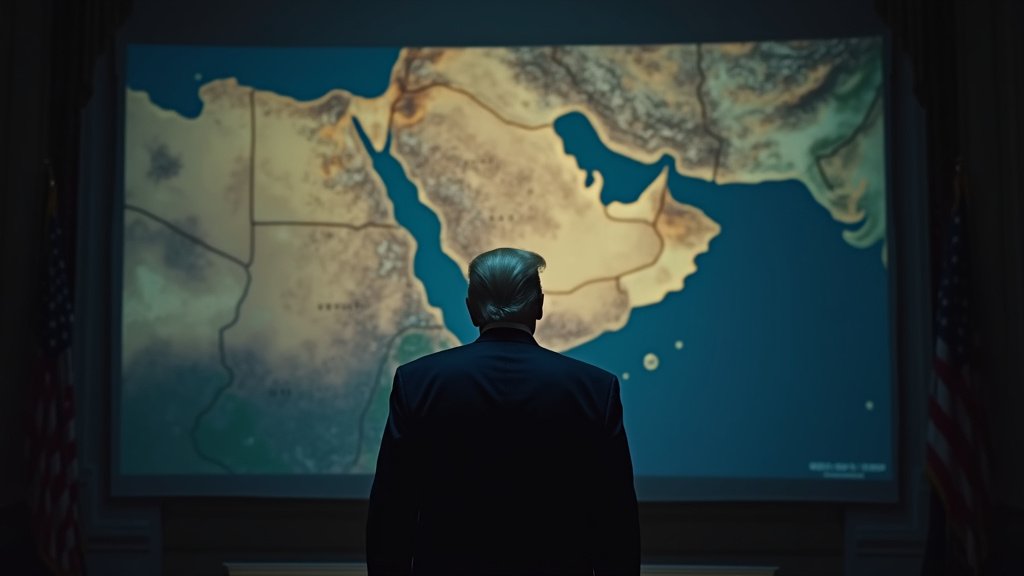In a dramatic escalation of diplomatic pressure, former U.S. President Donald Trump has issued Hamas a strict ultimatum: accept a comprehensive peace plan for Gaza within “three or four days,” or face “a very sad end.” The warning comes as global efforts to broker a ceasefire and end the prolonged conflict in the Gaza Strip intensify. This article explains gaza peace plan and why it matters.
The Trump-Netanyahu Peace Proposal — Gaza peace plan
Unveiled alongside Israeli Prime Minister Benjamin Netanyahu, the 20-point proposal outlines a roadmap intended to halt the nearly two-year war. Key provisions include an immediate ceasefire, the release of all Israeli hostages—both living and deceased—within 72 hours of Israel’s formal acceptance, and a phased withdrawal of Israeli forces from Gaza. In exchange for hostages, Israel would release hundreds of Palestinian prisoners. The plan also mandates the disarmament of Hamas and proposes a transitional governing body, a “Board of Peace,” to be chaired by Trump, overseeing a technocratic Palestinian administration. Increased humanitarian aid and reconstruction efforts are also central to the deal.
Regional Mediation and International Backing
Significant diplomatic efforts are underway, with Egypt and Turkey playing crucial roles as mediators. Leaders from these nations, along with Qatar, have met with Hamas officials in Doha, urging them to consider the proposal positively. The plan has garnered broad support from a coalition of Arab and Muslim nations, including Saudi Arabia, Jordan, the UAE, Pakistan, and Indonesia, as well as the Palestinian Authority. Russia and the Vatican have also signaled their endorsement, underscoring the global significance of this initiative.
Hamas’s Deliberations Amidst Conflicting Reports
While the proposed plan has received widespread international endorsement, Hamas’s response remains uncertain, with conflicting reports emerging. Some sources suggest the group is “leaning towards accepting” the deal, while others indicate a “likely rejection.” Hamas officials have reportedly conveyed that the plan “serves Israel’s interests” and “ignores those of the Palestinian people,” with particular sticking points including the demand for disarmament and the prospect of an international stabilization force, which they view as a potential form of occupation. The group has stated it is reviewing the proposal “in good faith.”
Domestic Pressure and U.S. Stance on the UN Stage
Within Israel, public sentiment is divided, with ongoing protests demanding an immediate ceasefire and the return of all hostages. Families of soldiers and hostages have been at the forefront of these demonstrations, urging the government to prioritize a deal to end the conflict. Meanwhile, the United States has maintained a firm diplomatic stance, notably vetoing multiple UN Security Council resolutions calling for an immediate ceasefire in Gaza. Washington has argued that such resolutions fail to condemn Hamas sufficiently and do not adequately link a ceasefire to the release of hostages, underscoring its continued alignment with Israel’s security concerns.
A Critical Juncture for Gaza
The current situation represents a critical juncture in the long-standing conflict. The Trump administration‘s assertive deadline places significant pressure on Hamas to make a decision that could profoundly shape the future of Gaza and the wider region. The implications of rejection—potentially leading to continued hostilities and further devastation—stand in stark contrast to the hope for a ceasefire, hostage release, and a path toward stability. As the world watches, the coming days are poised to be pivotal in determining whether this latest peace initiative can navigate the complex challenges and achieve a lasting resolution, or if the conflict will enter a yet more perilous phase. This developing news remains a focal point of global attention, impacting international relations and humanitarian concerns on a trending, global scale.
Key Individuals and Groups Involved:
* Donald Trump: Former U.S. President, architect and proponent of the peace plan.
* Benjamin Netanyahu: Israeli Prime Minister, publicly endorsed the plan.
* Hamas: Palestinian militant group governing Gaza, currently deliberating on the proposal.
* Egypt & Turkey: Key mediators, involved in direct talks with Hamas.
* Qatar: Also a crucial mediator in discussions with Hamas.
* Palestinian Authority (PA): Governs parts of the West Bank, has welcomed the plan.
* United States: Brokered the plan and wields significant diplomatic influence, including at the UN.
* Protesters in Israel: Families and citizens demanding a ceasefire and hostage release.
Sources: Reuters




